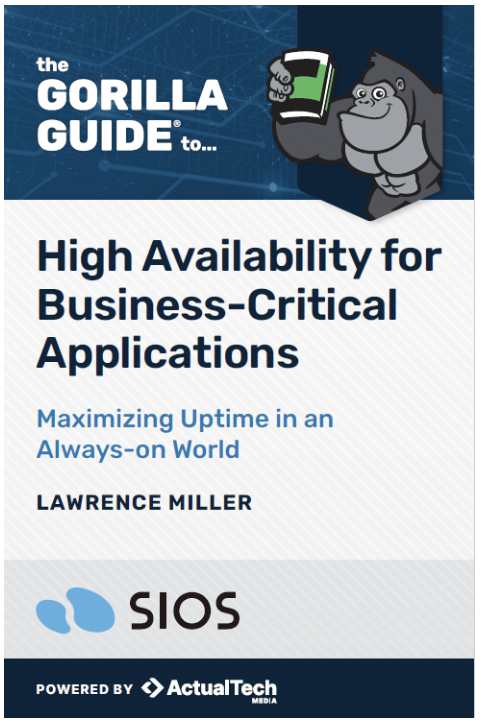
Mitigating IT and Business Challenges in the Oil and Gas Industry with High Availability and Disaster Recovery
The oil and gas industry is a critical sector in the global economy, providing energy to power transportation, heat homes, and fuel manufacturing. However, the industry is facing significant challenges, both in terms of its operations and its IT infrastructure. High availability and disaster recovery (HA/DR) solutions can help alleviate these challenges, providing companies with a robust IT infrastructure that is resilient to disruptions and downtime.
IT Challenges in the Oil and Gas Industry
The oil and gas industry faces a range of IT challenges, including complexity of operations, aging infrastructure, security and data protection, cost control, and regulatory compliance.
Complexity of Operations
The oil and gas industry is complex and highly regulated, requiring companies to manage a range of processes and systems involved in exploration, production, transportation, and refining. This complexity can make it difficult to manage IT systems effectively and efficiently.
HA/DR solutions can help simplify IT operations by providing a consolidated, integrated approach to IT management. By consolidating IT systems and processes, streamlining workflows, and reducing the number of applications and tools used, companies can reduce complexity and improve efficiency.
Aging Infrastructure
Many oil and gas companies operate aging IT infrastructure, which can be costly to maintain and prone to downtime. Legacy systems can also be difficult to integrate with newer technologies and can pose security risks.
HA/DR solutions can help modernize IT infrastructure by providing a phased approach to modernization. By prioritizing critical systems for modernization, gradually retiring legacy systems, and replacing them with newer technologies, companies can reduce the costs of maintaining legacy systems and improve the reliability and security of their IT infrastructure. In some configurations, HA/DR systems such as sophisticated failover clustering can also provide a means of upgrading and maintaining critical systems with near zero downtime.
Security and Data Protection
Oil and gas companies handle sensitive and confidential data, such as drilling data, production data, and financial information. This data is attractive to cyber attackers, and companies need to implement robust security measures to protect against cyber threats.
HA/DR solutions can enable a multi-layered approach to security that includes network security, endpoint security, and data protection. By implementing firewalls, intrusion detection and prevention systems, and encryption technologies, companies can protect against cyber threats and ensure the confidentiality and integrity of their data.
Cost Control
The oil and gas industry is subject to volatile commodity prices, which can impact profitability. To stay competitive, companies must effectively manage their costs, including the IT costs associated with unexpected downtime, which results in lost revenue and productivity.
HA/DR solutions can help reduce costs by providing automatic failover recovery for critical applications and minimizing unplanned downtime.
With HA/DR solutions, critical applications are automatically failed over to other active nodes when there is a failure. After the node has recovered, the data is automatically copied over to the attached storage and the application resumes. With that, unplanned downtimes are potentially averted.
Regulatory Compliance
The oil and gas industry is subject to a range of regulatory requirements, including safety, environmental, and financial regulations. Compliance can be complex and time-consuming, and non-compliance can result in fines and reputational damage.
HA/DR solutions can help companies comply with regulations by providing redundant systems and disaster recovery plans. By ensuring that critical data is protected in the event of a disruption, companies can reduce the risk of non-compliance and avoid fines and reputational damage.
Business Challenges in the Oil and Gas Industry
In addition to IT challenges, the oil and gas industry faces a range of business challenges, including declining reserves, increasing competition, and environmental concerns.
HA/DR solutions can help address these challenges by providing companies with a resilient IT infrastructure that can support the business operations needed to address these challenges.
For example, HA/DR solutions protection for continuous emissions monitoring systems (CEMS) ensures they have uninterrupted measurement of greenhouse gas emissions
HA/DR solutions can ensure production equipment can deliver real-time monitoring and analysis of production equipment needed to increase output and efficiency.
Increasing Competition
The oil and gas industry is highly competitive, with companies competing on a global scale for resources, market share, and profitability. As a result, companies need to be able to operate at maximum efficiency and effectiveness to remain competitive.
HA/DR solutions can help companies improve their competitiveness by ensuring that critical systems and data are available and accessible at all times. This can help to minimize downtime and maintain business continuity, which can be critical in the event of a disruption.
By implementing HA/DR solutions, companies can improve their ability to respond to market demands, make quick decisions, and execute operations efficiently. This can help to reduce costs, improve productivity, and enhance profitability, all of which are critical for success in a highly competitive industry.
Conclusion
The oil and gas industry is facing significant challenges in terms of its operations and IT infrastructure. These challenges include complexity of operations, aging infrastructure, security and data protection, cost control, and regulatory compliance. High availability and disaster recovery can help companies overcome these challenges by ensuring that critical systems and data are available and accessible at all times.
Implementing high availability and disaster recovery solutions can help companies improve their competitiveness, reduce costs, enhance productivity, and maintain business continuity. By leveraging these solutions, companies can stay ahead of the competition and continue to thrive in a dynamic and complex industry.
Contact SIOS today for High Availability and Disaster Recovery Solutions.
Reproduce with permission from SIOS




